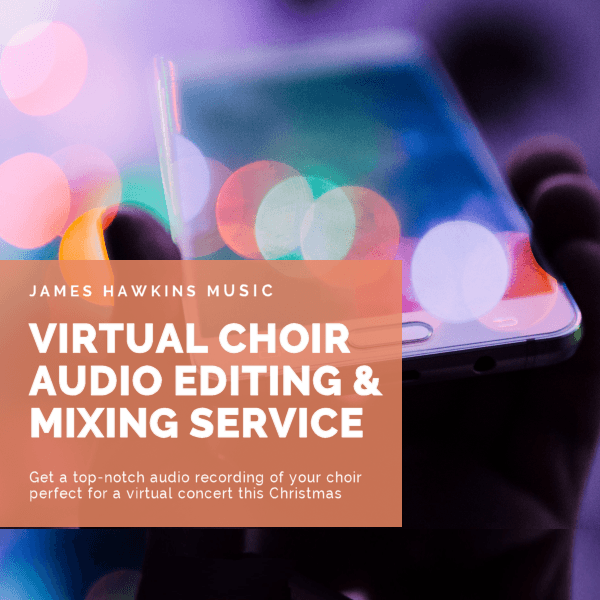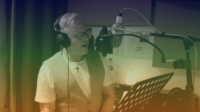How to make the best virtual choir recording
Over the past 15 months we’ve survived remote teaching and overcome the technical obstacles of Zoom lag and silent singers, now let’s look at concerts and how to make the best virtual choir recordings.
One of the better outcomes of the pandemic is the strides we’ve made using technology to record choirs virutally.
Choir members can create recordings of their singing performances without having to physically be together in a big venue. An online choir recording can be something to look forward to, and choir leaders can incentivize members with a knock-out online choral concert that will surprise and remind your singers how good they sound together!
In March 2020, choir leaders and music-makers worldwide – like many others – had their lives turned upside-down. School music teachers, choir directors and all sorts of ensembles were thrown into the world of remote teaching and virtual music-making.
With entrepreneurial spirit, we’ve overcome teaching on Zoom, Facebook etc., and pursued meeting our singers online, tweaking and improving our technical set-ups as time went on. Here in the UK we’re still waiting for a final release from lockdown in order to meet indoors and sing together in groups of more than six! So we’re running hybrid rehearsals right now, either indoors for six and the rest on zoom, or up to 30 outside on the green.
One choir leader bemoaned, “Zoom has killed singing!”
There have been casualties. Many groups found Zoom too stilted and wooden and not as exhilarating as real-life. And some choir leaders found the teaching incredibly intense and difficult. One choir leader exclaimed to me: “Zoom has killed singing!” In some ways it’s true, our software saviour has also been our persecutor, giving choir directors the faces of singers and not the sounds. Our members have also felt oddly trapped in their on-screen boxes, not able to interact as freely with us or with friends. It has definitely tested our commitment!
Why virtual performance matters
Even if we have survived virtual choir so far, we still face the problem of finding other ways to connect and simulate all that a choir gathering in person does. A big part of this is performance and taking pride in the work you have done together. The end of term concert is the time when everybody wants to sound their best, when you want to wow your audience and get a big cheer.
Planning a virtual choir performance can give you all focus. Your members will have something to keep them practising at home, knowing that their voices will be heard, and their performance does matter!
In summary, as music leaders, we can provide hope and an incentive to our singers and make the most of this new normal by arranging a virtual choir performance.
How do we perform when we can’t synchronise live on the Internet?
The only way is to simulate a performance in an online concert with an audience at home. It isn’t yet possible to broadcast a live performance from an online choir of members who are each in their own homes, so we must create a ‘recorded performance’ to playback.
Therefore, instead of filling a concert venue, you now need to organise a live event, either inviting people into a closed conference call / webinar, or by live-streaming on Facebook or YouTube etc.
Your concert can be hosted online with a compere, who can create a live feeling to the show, for example, by planning a few ideas to increase audience interaction.
If you’re planning to live stream your concert on YouTube for example, then you will need to set up and practice using an encoder live streaming, which allows you to broadcast through webcam AND your desktop video content.
The concert, of course, is an illusion, in that it is actually a two-stage performance pre-recorded. But it has in its favour the element of surprise! None of your choir members actually know what they sound like either! Playing them a finished piece will be a gigantic Christmas present 😊
To get to this point, you will need an audio and video recording of your choir, which have to be created separately, synchronized and then broadcast.
The trouble for music leaders is teaching online is one thing, recording online and doing that well is a whole different ball game! For a start we have to upskill our members.
If that sounds like a major headache, help is at hand.
Steps to make the best virtual choir recording
Your set list
As for normal concerts, it’s probably best to decide how many songs you want to record, and to plan your set list. Consider that each song is going to require a fair effort to create both audio and video recordings, and it’s probable that your audience will have a shorter attention span, as this will not be a full immersive experience.

What is your vision for your video(s)?
Decide what you want your online concert to look like. It will be a visual experience as well as an audio one, and each will elevate (or, if done badly, distract from) the other.
Using Zoom to create a video of your choir
The simple way of creating a choir video is to record your choir singing on a Zoom or conferencing software call. When you record your session, you should switch to a gallery view and pan through the screens of members’ faces as they sing. Run through each song a few times to get plenty of footage. (Note that Zoom doesn’t record people’s names in the bottom right of the boxes.) You will require simple video editing techniques to edit footage together, which you can do in iMovie or similar.
Being more adventurous with your video
Depending on your ambition and skill level, or the skills you have in your choir itself, you can go in any direction and create visual imagery, artwork, animation, or ask members to send different kinds of footage that can be cut and edited together.
There are some really clean and simple tactics that work, for example, singers can wear similar colours and styles of clothes, use hand movements or props (don’t overdo it), match backgrounds, e.g. sky / grass / white wash wall etc. All will add to the coherence of your video.
Don’t forget that any sound on your video will be removed and replaced with your synchronized and mixed choir recordings that your members will make at home.
Five steps to produce virtual concert audio
Creating audio recordings of your accompaniment and your singers
Pre-record your guide vocals and accompaniment.
Have your accompaniments and harmony parts pre-recorded because this is the only way that people will be able to sing in tune and in time at home. Separate recordings of each harmony part will help singers learn and rehearse, and when it comes to submitting their individual performances, this is essential to create synchronicity between the choir once the recordings are all collated.
Prepare your singers to make home recordings.
You need to get people to make home recordings of their harmony part as accurately as possible, giving them instructions on how to prepare their room, their home technology and themselves.
Collect your choir’s recordings and edit.
You need to collect all your recordings and edit them so that they line up from start to finish. This requires the ability to import multiple audio files (probably of different file types depending on the apps and devices people have used to record themselves) into an audio editing software, such as GarageBand or ProTools.
Mix your vocals and line up with your video
Next you need create the ‘performance’, which in this circumstance is actually a mix: you need balance between the harmony parts, to pan the harmony parts into their vocal grouping, then mix it down. If you’ve made a video, synchronise your visual to your audio, so the mouths are in time with the lyrics.
Export your movie file ready for broadcast.
When everything’s aligned you can export this as a movie file, and it becomes your performance ready for broadcast. In preparation for the concert, you will want all your videos prepped and ready to play. And you can also consider uploading the videos on YouTube and putting it on your website afterwards as well.
See some virtual choir example videos to see how it can work.
Some more useful links:
In summary…
If you’re looking to put on a quality virtual concert for your choir, it’s time to start planning now, so you can prepare your audio, video and practice broadcasting it online.
Good luck!









